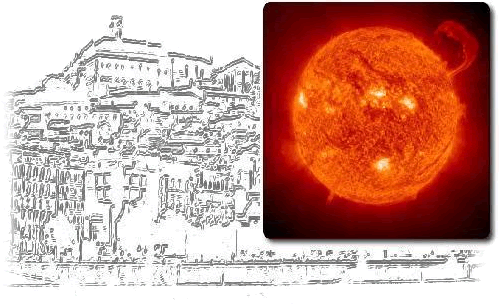|
|
|
|
|
|
|
|
|
|
|
|
|
Jean-Pierre Raulin, Mr. - Dr. |
|
Centro de Rádio Astronomia Astrofísica Mackenzie, Escola de Engenharia, Universidade Presbiteriana Mackenzie, São Paulo, SP, Brasil |
|
|
|
|
|
|
|
Session 1 - Speaker |
|
Origin of the 30 THz emission during the 2012 March 13 solar flare at 1720 UT |
|
G. Trottet (1), J.-P. Raulin (2), A. MacKinnon (3), C.G. Giménez de Castro (2), P.J. Simões (3), D.Cabezas (2), V. de La Luz (4), M. Luoni
(5), P. Kaufmann (2,6); 1 - LESIA, Observatoire de Paris, PSL Research University, CNRS, Sorbonne Universits, UPMC Univ. Paris 06, Univ. Paris Diderot, Sorbonne Paris
Cit, France; 2 - CRAAM/EE Mackenzie University, São Paulo, Brazil; 3 - School of Physics & Astronomy, University of Glasgow, Scotland; 4 - INAOE, Puebla, Mexico;
5 - IAFE, Buenos Aires, Argentina; 6 - CCS, Campinas University, Brazil |
|
|
|
Solar observations in the infrared domain can bring important clues on the
lower layers of the solar atmosphere and on their response to primary energy
released during flares. The 10 micron (30 THz) observations of the flare
SOL2012-03-13 recently presented and discussed in Kaufmann et al. (2013), is one of
the few examples in the literature. However, no firm conclusions are drawn on the
origin of the mid-infrared radiation. In this work we present a detailed
multi-frequency analysis of SOL2012-03-13, including observations in radio
millimeter and sub millimeter wavelengths, Hard X-Ray (HXR) and Gamma-Ray (GR),
H-alpha, and white-light. HXR/GR spectral analysis allows estimating the electron
double power-law energy distribution at the origin of the non-thermal bremsstrahlung
continuum emission. It is also shown that the high-energy (> ~0.8 MeV) part of this
distribution is responsible for the > 20 GHz radio emission during the flare. By
comparing flaring and quiescent active region solar atmosphere models, we find that most of the
radiation excess at 30 THz observed during the flare is compatible with optically
thin thermal free-free emission. The emitting source of assumed 10″ size, with
temperature T ~ 8000 K is located at an altitude range of 960-1100 km above the
photosphere where the mass column density varies from ~ 3.5 10-3 to 6.2 10-3 g
cm-2. We finally show that the chromospheric heating, which results in the 30 THz
excess radiation, can be due to energy deposited by non-thermal flare accelerated
electrons, protons and alpha particles in the quiescent atmosphere layer, which
spans the same range of column densities. |
|
|
|
|
|
|
|




 









 |



